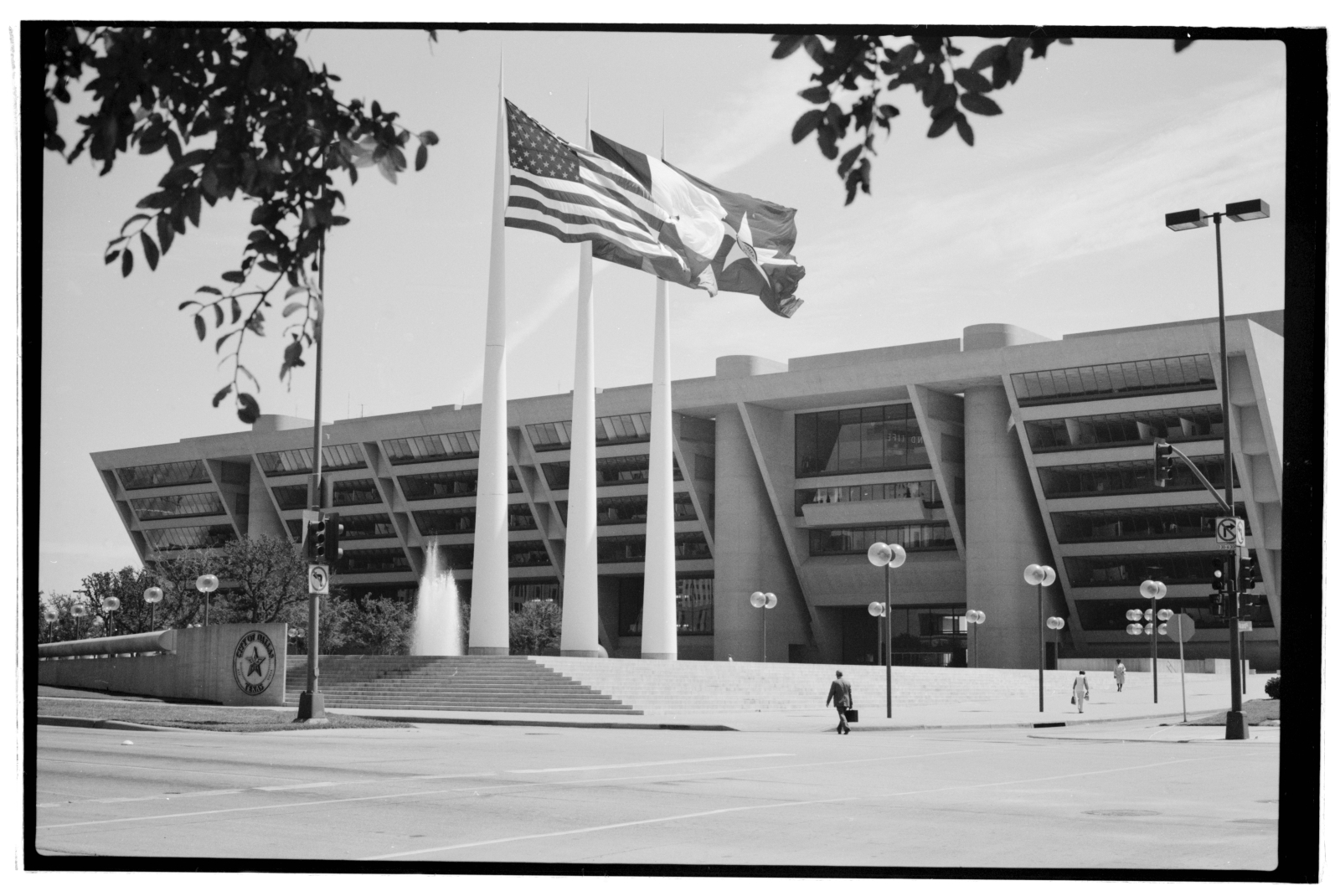In mid-October 2025, the architecture community was surprised by an article in the Dallas Morning News that Dallas officials are considering demolishing I.M. Pei's iconic Brutalist Dallas City Hall. This follows a Feburary 2025 approval by the Dallas Landmark Commission, who voted to initiate historic designation.
A coalition of local and national organizations including the North Texas chapter of Docomomo, Docomomo US, AIA Dallas, Preservation Dallas, and Preservation Texas has formed to work on saving this bold Dallas icon. A petition for saving City Hall has over 4000 signatures so far. For more information on what's happening, visit the Save Dallas City Hall website.
Update: November 20, 2025
Submission by: David Preziosi, Docomomo US/North Texas
Last week, the Dallas City Council voted to explore options for leaving its iconic Brutalist-style I.M. Pei-designed City Hall. Discussions of leaving City Hall began last month and came as a big surprise to the architecture and historic preservation community in Dallas, Texas, and the U.S. According to the city, the main impetus for considering leaving City Hall, which opened in 1978, is the cost of repairs needed because of deferred maintenance. In the past few weeks, estimates ballooned from 125mm to 600mm for repairs using past reports and unqualified staff estimates.
The building of Dallas City Hall was an extension of the planning efforts after the assassination of President John F. Kennedy to reshape Dallas as a forward and modern city. Over 10 years went into planning and designing the massive 800,000+ square foot building to meet the needs of the city well into the future. They sited the building on fourteen acres at the southern end of downtown. A four-acre plaza, designed at its front door, covered a 1,500-car parking garage. The plaza with a fountain, trees, sculptures, and lots of concrete has become a place for citizens to gather over the years and has been the site of numerous and varied events, along with a place for protests.
In March of this year, the Dallas Landmark Commission voted to initiate the Landmark designation process for the building to recognize its historic and architectural importance to the city. Initiation of the process by the Landmark Commission protects the building for 2 years from alteration or demolition without its permission. The City Council will make the final decision on landmarking the building, and they could choose to deny the landmarking by the time it gets to them.
Many concerns of the public have gone unanswered by the City. Why is the process moving so fast and where is the public involvement in this process? The focus seems to be on maximum economic development of the site rather than keeping city hall. Where are the costs of relocating city hall? How have the estimates for repair increased so much without qualified professionals giving repair costs (local architects agree the severity of its condition and cost to repair is greatly overstated)? How is this effort related to a new sports arena in downtown, which developers call out City Hall as the perfect site for it?
Timeline:
The Future of the Dallas City Hall remains uncertain as Dallas City Councilmembers discuss options for its future. A series of meetings were held in late October and early November:
October 21
Dallas’ City Council’s Finance Committee discussed the physical condition of the 1978 building, focusing on needed repairs, some of which had previously been identified as problematic in the past. Committee members discussed the possibility of exploring other options for the building, including vacating, and worse. This was the first meeting open to the public on this topic; however, no public input was allowed.
October 27
Dallas’s City Council’s Finance and Economic Development committees held a joint meeting, which provided updates for cost ‘guestimates’ of repairs, and a discussion about other options for the building and its land. Again, no public input was allowed.
November 3
The Finance Committee meeting debated options, and reviewed a draft resolution for the City Manager to explore options for City Hall, including repair and relocating staff to other locations (existing downtown office building or new construction) – with costs and economic impact for all options. This draft resolution was sent to the Dallas City Council for action at their November 12 Council meeting. Once again, no public input was allowed.
November 3
A public “listening session” was hosted by two council members in the evening to hear, for the first time, from the public on the issue. The standing room only crowd of over 250 packed the room. Nearly all the speakers were in support of ‘Saving Dallas City Hall’ and testimony had to be cut off due to time constraints for using the room.
November 12
The Finance Committee’s resolution was discussed at the Dallas City Council meeting, with an additional requirement that the redevelopment of City Hall be done in a way that is supportive of the Convention Center Master Plan. Public comments were allowed, with 30 speakers (many who were Docomomo or AIA members), with nearly all opposing the resolution. After debate, the City Council passed the resolution 12- 3. The City Manager is now tasked with presenting findings to the City Council in February 2026 of what it would cost to relocate City Hall to another building and the cost to repair the existing building. In addition, the City Manager is also to look at what the economic development benefits are of redeveloping the City Hall property.
